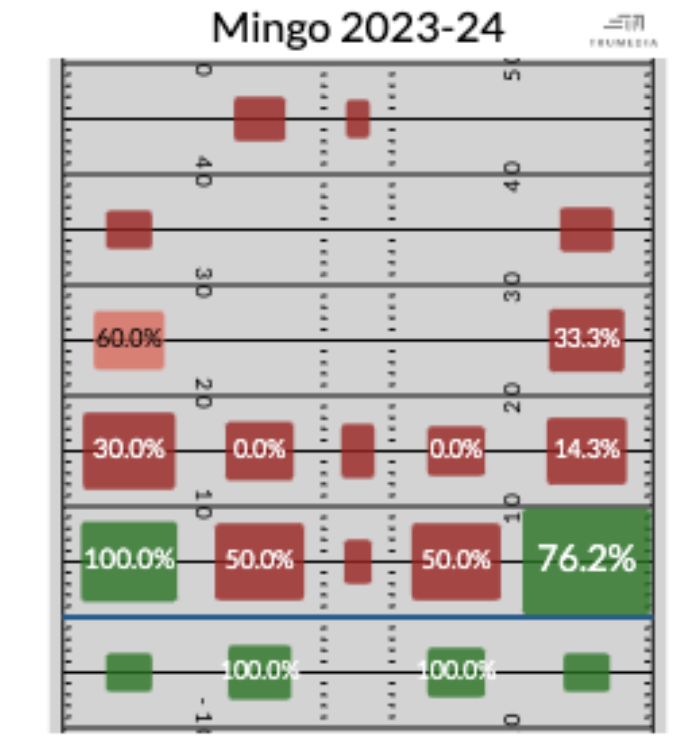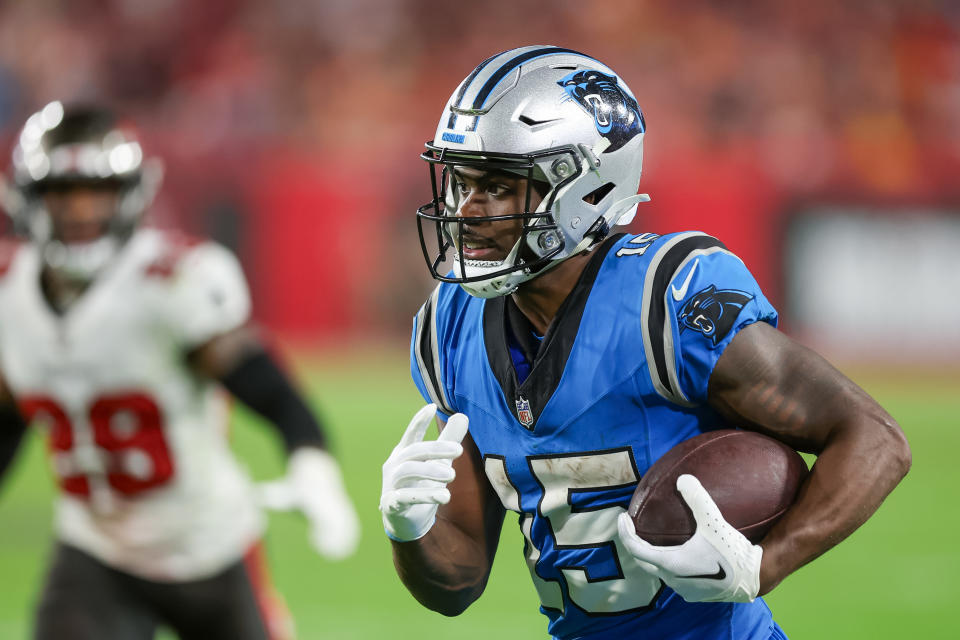As the severity of Dak Prescott’s hamstring injury began to become clearer Monday, the reality of the Dallas Cowboys in 2024 also became clearer.
It is statistically unlikely that a 3-5 franchise whose head coach’s contract is about to expire will advance to the postseason. The Cowboys appeared headed for elimination before losing Prescott for this weekend’s NFC East game against the Philadelphia Eagles. Facing what team owner Jerry Jones called a “likely” injured reserve designation for Prescott, they appear even closer.
There are front offices in the NFL who would look at this combination of factors and consider themselves lucky to have received this news right before the league’s trade deadline.
They would trade one or two talented players near the end of their contract for assets to better position the franchise to get over the playoff hurdle next season.
And yet, front offices across the NFL knew that’s not how Jones, also the team’s general manager, tends to operate. In the 48 hours between Prescott’s injury and the NFL trade deadline, few expected a change of heart from Dallas.
“I feel like it’s not Jerry who should be selling,” an NFC executive texted Monday afternoon. “We don’t believe they are going to negotiate.”
Jones himself was quick to confirm it on Tuesday morning.
“We’re not selling,” Jones said on Dallas radio station 105.3 The Fan. “We are buying and not selling.”
An hour later, the Cowboys had traded a 2025 fourth-round pick to the Carolina Panthers in exchange for wide receiver Jonathan Mingo and a 2025 seventh-round pick.
Perhaps Dallas will prove to be a better home for the 2023 second-round pick who played for three head coaches in 24 games, as the current Panthers staff is increasingly disinterested in including Mingo in their offense. Or maybe the league is right to laugh at the Cowboys for sending their fourth-round pick (slightly offset by Carolina’s seventh) for a receiver who has struggled with drops.
Either way, acquiring talent suggests a level of belief that this team’s performance does not validate. Jones’ hope, as always, is for the best possible outcome.
“We’ve really narrowed that window with our record right now, as far as our goals of making the playoffs and having a team that can really compete at the highest level,” Jones said. “We’ve added to that the loss of our quarterback. So we’re going to have to do something that’s a storybook type scenario.
“I’ve been a part of a couple of them and it can happen.”
How much did the Cowboys really spend on Jonathan Mingo?
Player-for-pick trades sometimes seem too opaque to judge.
But one way to rank what the Cowboys just traded is to look at the production of the players they selected in the fourth round.
Since the Cowboys transitioned from their Tony Romo era to their Prescott era in 2016, they have selected 12 players in the fourth round.
Six are starters on four teams this year. Prescott (2016) and Class of 2022 tight end Jake Ferguson are two of the Cowboys’ most effective contributors; Class of 2018 defensive end Dorance Armstrong and class of 2020 center Tyler Biadasz have helped anchor the Washington Commanders’ 7-2 start. Class of 2018 tight end Dalton Schultz is in his sixth season as a starter overall and second with the Houston Texans. And class of 2019 running back Tony Pollard is the Tennessee Titans’ leading rusher.
Five of the six unsuccessful players spent time on injured reserve while with the Cowboys.
Still, the 50% hit rate in the fourth round is above expectations, a second NFC executive told Yahoo Sports.
The executive spoke more generally Tuesday night about trades around the league, noting that acquisitions shouldn’t just be measured by the direct value received in return. “Replacement cost,” or the cost of replacing the talent of the departed player, also matters.
The executive’s research into NFL draft success indicated that the league gets it right about 67% of the time, and that rate drops by 12 to 15% each round. With that framework, which is indicative if inconclusive, fourth-round picks have about a 30% chance of succeeding.
The Cowboys found multi-year starters in 50% of their picks.
So while Mingo’s measurable values as a second-round pick are more favorable than most fourth-round picks the Cowboys could make and his short-term value is still cheaper than most free agents , justifying this deal may require an affirmative answer to the question: Is there a more than 50% chance that Mingo will be successful in Dallas?
Mingo’s shaky tenure in Carolina, combined with the Cowboys’ looming uncertainty, casts cause for doubt.
What are the Cowboys working with after Mingo failed in Carolina?
A league source with knowledge of Mingo’s time with the Panthers described the Mississippi product as a versatile receiver who can block well, line up in the slot or outside and gain yards after the catch. The 6-foot-2, 220-pound receiver ran a 4.46 40-yard dash to create a series of measurable variables that teams were excited about. They thought their speed was enough to go deeper.
But Mingo wasn’t consistently a deep threat, or any threat, in his year and a half with the Panthers. Only 12.9% of his targets last season were deep and only 7.7% this year. Still, Mingo caught passes at a lower rate each year than any of his usual target teammates, his catch rate from 53% last year dropping to 46.2% this year. Mingo’s opportunities decreased accordingly, as he was on the field for just 56% of snaps this year, after 89% last year.

“Bad hands and he makes easy catches look difficult,” the assistant coach said. “Poor body control and doesn’t have a great feel for route running and getting open at the top of the route to create separation. That said, it opened up a bit and wasn’t the goal.
“It’s really the staff’s lack of confidence in the opportunities they’ve had.”
In 24 games with 19 starts, Mingo caught 55 of 111 targets for 539 receiving yards and no touchdowns.
He dropped six passes, according to Pro Football Reference. Three of his targets turned into interceptions.
The source thought finding a rhythm could inject confidence that Mingo had lost, perhaps strengthening his catch point and giving him the confidence to secure catches standing and running rather than in the air. Mingo should benefit from better quarterback play, if not this year, then next, in Prescott. He should benefit from defenses shifting attention to Pro Bowl receiver CeeDee Lamb. But if the Cowboys move on from head coach Mike McCarthy after his contract expires in January, Mingo will be preparing to report to his fifth head coach in 20 months.
Will the new coach and play-caller believe Mingo fits into the system? The receiver has already seen the cost that a change in coaching regime could have this year. And the Cowboys, acquiring talent before determining their coach and system, spent a fourth-round pick to risk this possibility of misalignment once again. (To be fair, the Cowboys will likely have additional mid-round compensatory picks after losing several players in free agency last year.)
In the very short term, Jones will celebrate his commitment to buy rather than sell and backup quarterback Cooper Rush will enter a divisional contest with another potential target.
Jones can keep his storybook hopes alive for another day.
“A lot of times when it gets dark, I’ve seen the positives,” Jones said Sunday after the Cowboys’ fifth loss of the season. “Personally, I am far from dismayed for our team, for this year.
“I’m not dismayed. I’m worried. “I should be worried.”


